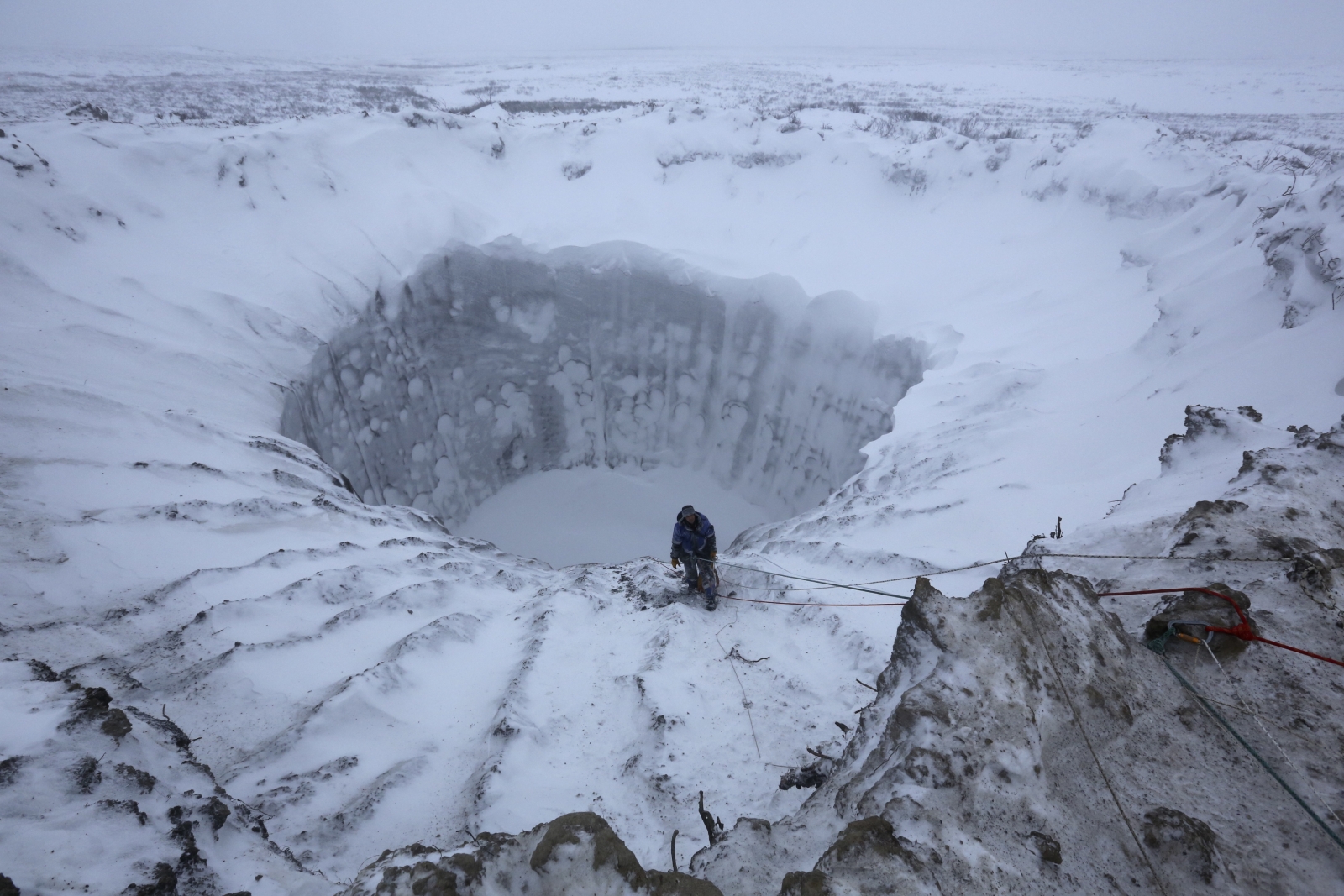Siberia permafrost: There are over 7,000 methane-filled bubbles 'ready to explode' in the Arctic
Huge craters have been appearing in Arctic regions over recent years due to thawing permafrost.
There are over 7,000 gas-filled bubbles in remote parts of Siberia that are set to explode, scientists have discovered. Following extensive field expeditions and satellite surveys, researchers in Russia have identified thousands of bulging bumps in the Yamal and Gydan peninsulas – far more than they had expected.
Alexey Titovsky, director of Yamal department for science and innovation, told the Siberian Times that understanding the bubbles is of paramount important to assessing the risk they pose.
In July last year, scientists released footage of the ground on Bely Island wobbling underfoot. When they punctured them, methane and carbon dioxide was released. It is thought an abnormally warm summer had caused the permafrost to thaw, leading to the release of methane that had been locked up in the ground. At present, it is thought this process is behind the emergence of the numerous craters that have appeared over recent years – including the 'gateway to the underworld' crater near Batagaiin.
Titovsky said the 7,000 bulging bumps identified could also collapse into craters: "At first such a bump is a bubble, or 'bulgunyakh' in the local Yakut language. With time the bubble explodes, releasing gas. This is how gigantic funnels form.
"We need to know which bumps are dangerous and which are not. Scientists are working on detecting and structuring signs of potential threat, like the maximum height of a bump and pressure that the earth can withstand."
The team plans to continue working throughout the year to chart and map all of the underground bubbles in Yamal.

Thawing permafrost as a result of global warming is expected to lead to more methane release in the future, a spokesman from the Ural branch of Russian Academy of Science said. "An abnormally warm summer in 2016 on the Yamal peninsula must have added to the process," they added.
On Bely Island, scientists found methane was 1,000 times above normal, while CO2 was around 25 times higher. "As we took off a layer of grass and soil, a fountain of gas erupted," one of the scientists working at the site explained.
The release of methane from the thawing permafrost is of huge concern to climate scientists. Max Holmes, the deputy director and senior scientist at the Woods Hole Research Centre, told IBTimes UK it could lead to the collapse of human infrastructures, like roads and towns, as well as creating a feedback cycle that results in even more warming.

"That is a self-reinforcing cycle with greenhouse gasses released as permafrost thaws, which causes warming," he said. "This results in more permafrost thaw and causes more warming and on and on. That is something we worry a lot about. Once this cycle gets going it is hard to stop.
"How do we stop it? We control what we can control. Permafrost thaw is driven fundamentally by global warming, which is amplified in the Arctic. How do you control global warming? You control the emissions that are directly under your control – fossil fuel combustion and deforestation."




© Copyright IBTimes 2024. All rights reserved.







